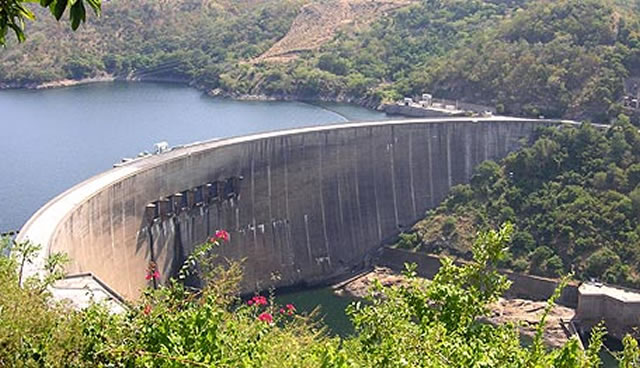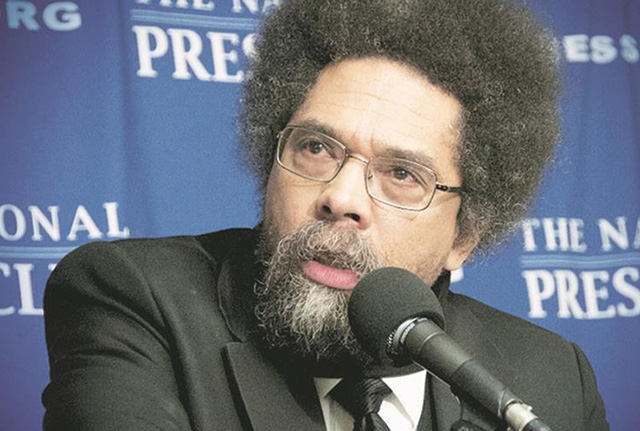Zim turns to fossil energy, as drought bites


Zimbabwe’s main hydroelectric power plant at Kariba is failing, forcing the southern African nation to turn to dirtier fossil fuel-based energies to make up for the deficit
Jeffrey Gogo Climate Story
With back-to-back droughts since 2013, Zimbabwe’s main hydroelectric power plant at Kariba is failing, forcing the southern African nation to turn to dirtier fossil fuel-based energies to make up for the deficit.
The Kariba Hydropower Station is capacitated to generate 750 megawatts of electricity, but the plant has operated at just 63 percent of capacity since early October when the Kariba dam began to dry up.
In good times, hydropower accounts for over 50 percent of national electricity output.
Today, that figure has tumbled to just 34 percent, or 468 megawatts, according to latest data on the Zesa Holdings’ website, which also records the power utility currently producing 1 382MW, 38 percent below what is actually needed.
The future looks darker. Zesa Holdings chief executive Josh Chifamba warned a business conference in Harare in October that generation at Kariba was likely to fall to as low as 265MW early on in the New Year on account of the poor rains predicted this summer.
Should that happen, hydropower will account for just a fifth of the national generation, an unsustainably rapid decline in a very short space of time–all a result of climate change.
Faced with this crisis, the Government of Zimbabwe has now been forced to turn to emergency power plants that feed on diesel, an imported product that together with coal form the nucleus of climate change drivers.
Within the next eight weeks, Zesa Holdings is expected to have brought the Mutare Emergency peaking power plant online, adding 120MW onto the grid, according to promises made by Energy Minister, Samuel Undenge, last year.
It is not yet clear how much progress authorities have made constructing the plant, but it will run on either diesel or gas.
A diesel-fired electric power plant of the kind planned at Mutare will require roughly 25 000 litres of fuel to run optimally, say experts, setting the strained power utility back more than $10 million in annual fuel import costs.
The true quantity of fuel consumed by the plant will, however, depend on its energy efficiency, the amount of heat lost or saved while generating power — something sorely missing in Zimbabwe’s energy sector.
To cover the diesel power plant’s projected operational expenses, Zesa Holdings is this year planning to transfer the costs to consumers via a 42 percent electricity tariff hike from US9,86c per kilowatt hour to US14c per kilowatt hour.
With strategic forward planning, Zesa Holdings need not be asking illiquid consumers — already struggling with $1 billion of unsettled electricity bills — to pay more for energy produced from sources with a strong carbon footprint.
As part of strategies aimed at building resilience to climate change, reducing energy costs and ultimately becoming more energy secure, Zesa Holdings needs to seriously pursue the development and integration of solar and other renewables onto the national grid.
This is not something new, noone has to reinvent the wheel. Engineers at the power utility are well aware of the potential social, economic and environmental benefits from renewable energy use, particularly solar.
Zesa Holdings requires a comprehensive framework for improving the effectiveness of renewable energy deployment in the country.
This could be achieved in several ways, but the utility will undoubtedly need stronger viable strategies at mobilising finance aimed specifically at clean energy development as provided for under the different UN funding mechanisms within the scope of the Sustainable Energy For All initiative.
Low carbon development in a developing country was always going to be an uphill task. At a time of climate change where nations are under pressure to curb carbon emssions, the challenge is to balance renewable and non-renewable energy.
Currently, Zimbabwe has set eyes on the rapid development of thermal energy contrary to the climate plan it submitted to the UN late last year, as part of its contribution to mitigating climate change.
While the plan builds on exploiting renewable energy to drive future economic development, Zimbabwe has recently secured a total $157 million loan from the Indian Exim Bank to refurbish old coal-fired power plants in Harare and Bulawayo, adding a combined 150MW to the grid by 2018.
The renovation of Munyati thermal station — still at tender — will bring on an extra 70MW to the grid, grand strategies the Energy Minister has termed “medium quick wins” that should address the Kariba shortfall.
Cumulatively, the country targets 350MW from coal between now and 2018, yet there is a much less optimistic outlook for renewable energy. The quick wins exclude the expansion of Hwange thermal, the country’s biggest electric-power plant, that is expected to generate an additional 600MW after completion 5 years from now.
According to the National Energy Policy, Zimbabwe is targeting a combined 1,500MW of hydropower from the expansion of Kariba by 2016 — the year we have just started — and a new plant at the Batoka Gorge four years later, funds permitting.
There are plans also to build hydro stations within inland dams and rivers at Pungwe providing a cumulative 24MW in two phases, Tokwe-Mukosi 12MW, Gairezi 30MW and Kondo 100MW.
The expansion of Kariba, which will add 300MW, is reportedly underway while Gairezi has gone to tender.
These projects face climate threats similar to those that have seen Kariba teeter on the brink of closure, a very realistic prospect as the country faces yet another drought in the 2015 /16 season.
At Gwanda, Insukamini and Munyati, authorities are targeting to develop 300MW of solar, but there is no clear outline how soon those will come on board. Zimbabwe’s immediate energy future looks anything but renewable.
God is faithful.










Comments